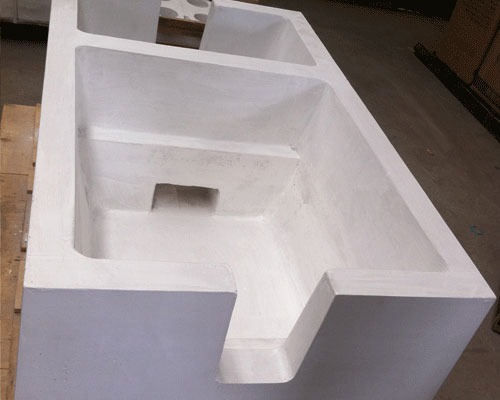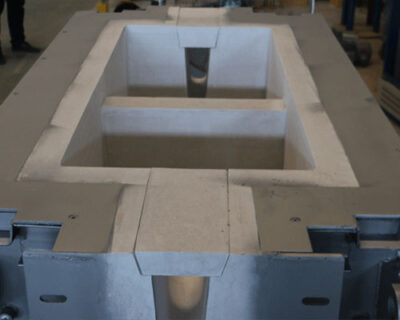During the melting and casting of aluminum, bubbles, oxide films, and non-metallic inclusions disrupt the continuity of the metal structure. It will cause stress concentration, lower the performance of the casting, and reduce the processing performance. In order to avoid these hazards, it needs the help of the Ceramic Filter Box. AdTech aluminum liquid filter box is an aluminum industry special aluminum silicate filter box. Usually, the foam ceramic filter box consists of a steel shell, and aluminum silicate liner.
Ceramic Filter Box Application
1. Adsorption purification
Nitrogen or other inert gases are introduced to the aluminum liquid filter tank. These gases and the aluminum liquid generate a bubble chlorine salt, which causes the impurities to float or sink, so as to achieve the purpose of removing the gases and impurities in the aluminum liquid.

2. Filtration purification
The molten aluminum flows into the aluminum liquid filter tank, and the ceramic foam filter captures the inclusions.
During filtration, the liquid aluminum rakes the foam ceramic filter and flows along the zigzag channels and voids in the filter plate. Impurities in the aluminum melt contact with the surface of the filter plate channel. Under the action of deposition, friction, surface adsorption, and other effects, impurities firmly left in the filter plate.
Rectification. After the turbulent molten metal passes through the filter, it becomes a smooth laminar flow state, which prevents the molten metal from entraining gas, reduces the erosion of the molten metal on the cavity, and exerts the slag blocking function of the gating system to avoid secondary oxidation slag.
Mechanical screening. There are a large number of large impurities such as oxide inclusions and slag in the molten metal. A large amount of inclusions can be screened out by selecting a foam ceramic filter with a suitable pore size.
Filter cake mechanism. Due to the three-dimensional structure of ceramic foam filter, it can effectively block the slag. Many inclusions larger than the filter pore size are captured at the filter entrance. As the number of trapped inclusions increases, a “filter cake” composed of large inclusions is formed at the entrance of the filter. The filter cake makes the liquid flow thinner, so that inclusions smaller than the pore size of the filter are also partially captured on the “filter cake”.
Adsorption mechanism. The ceramic foam filter has a large specific surface area, which is conducive to the adsorption of a large number of fine impurities. This adsorption is mainly the physical adsorption of intermolecular gravity.

